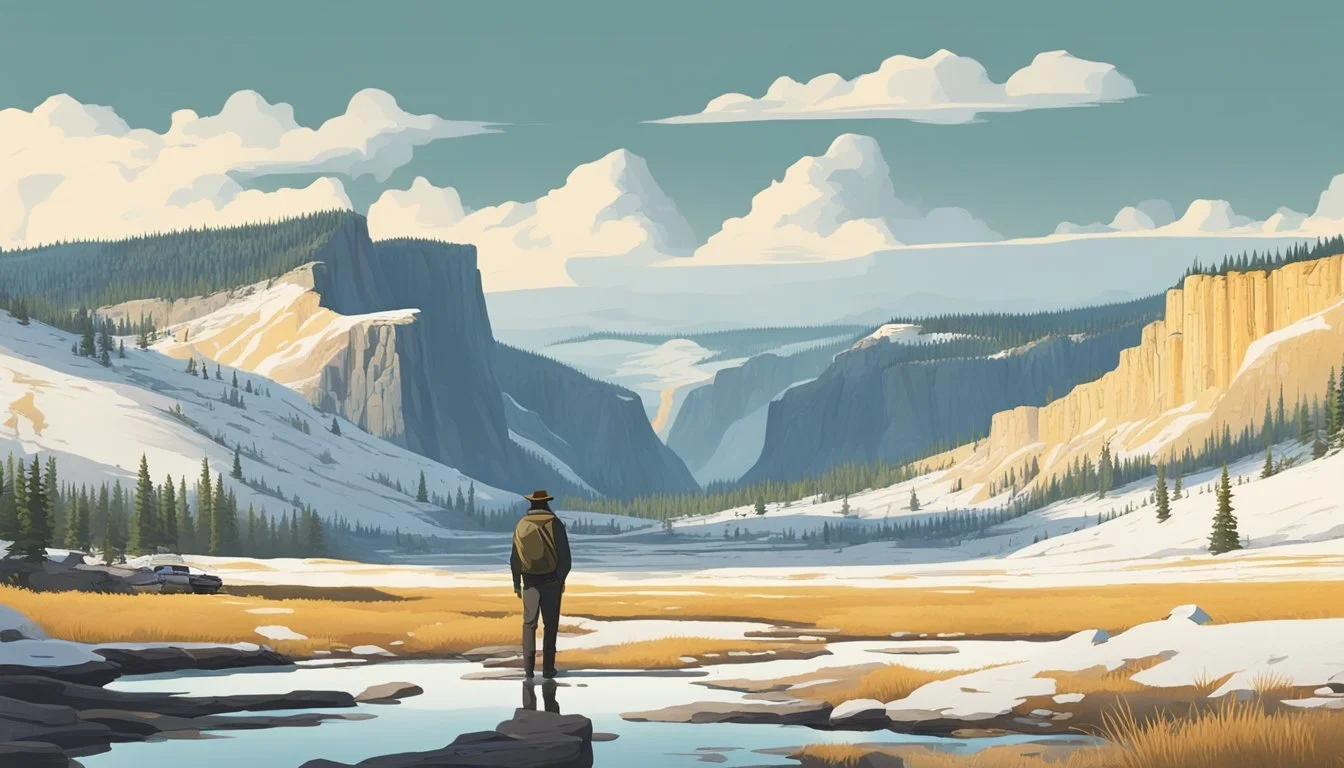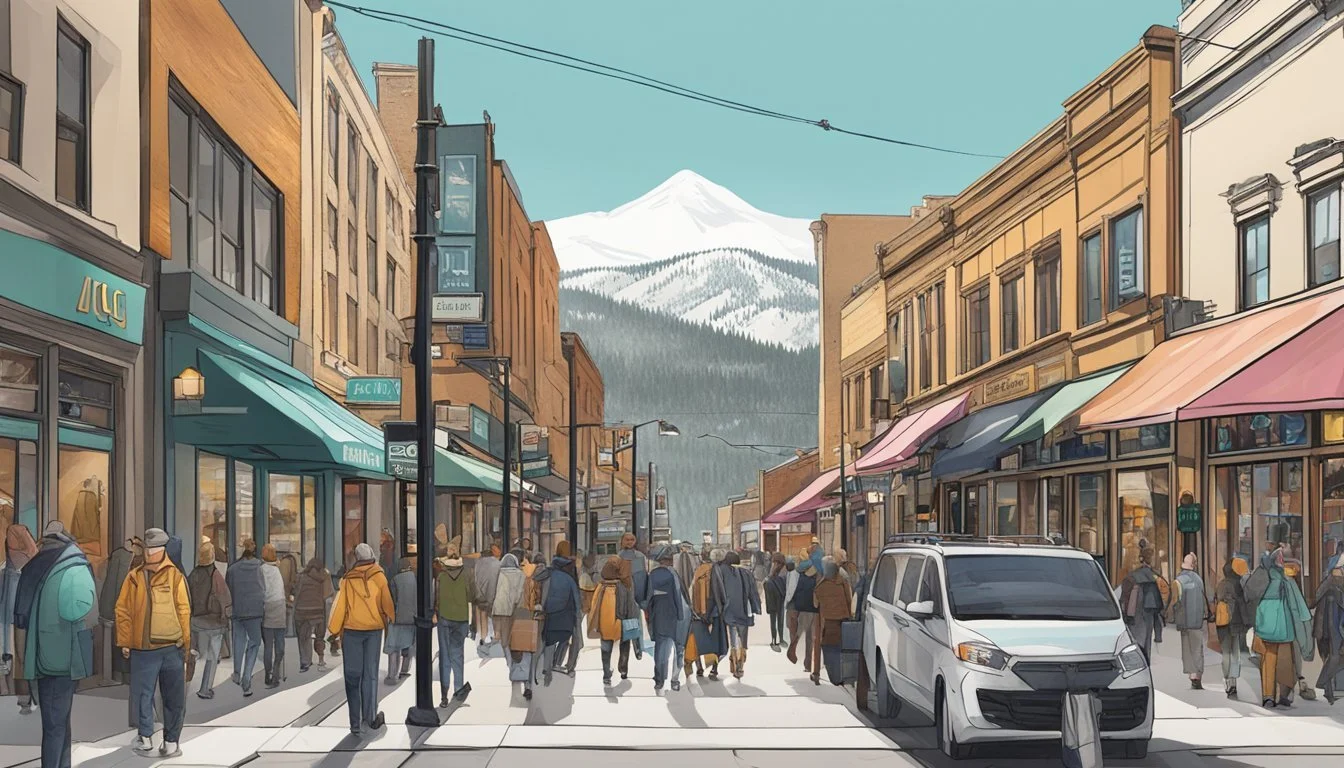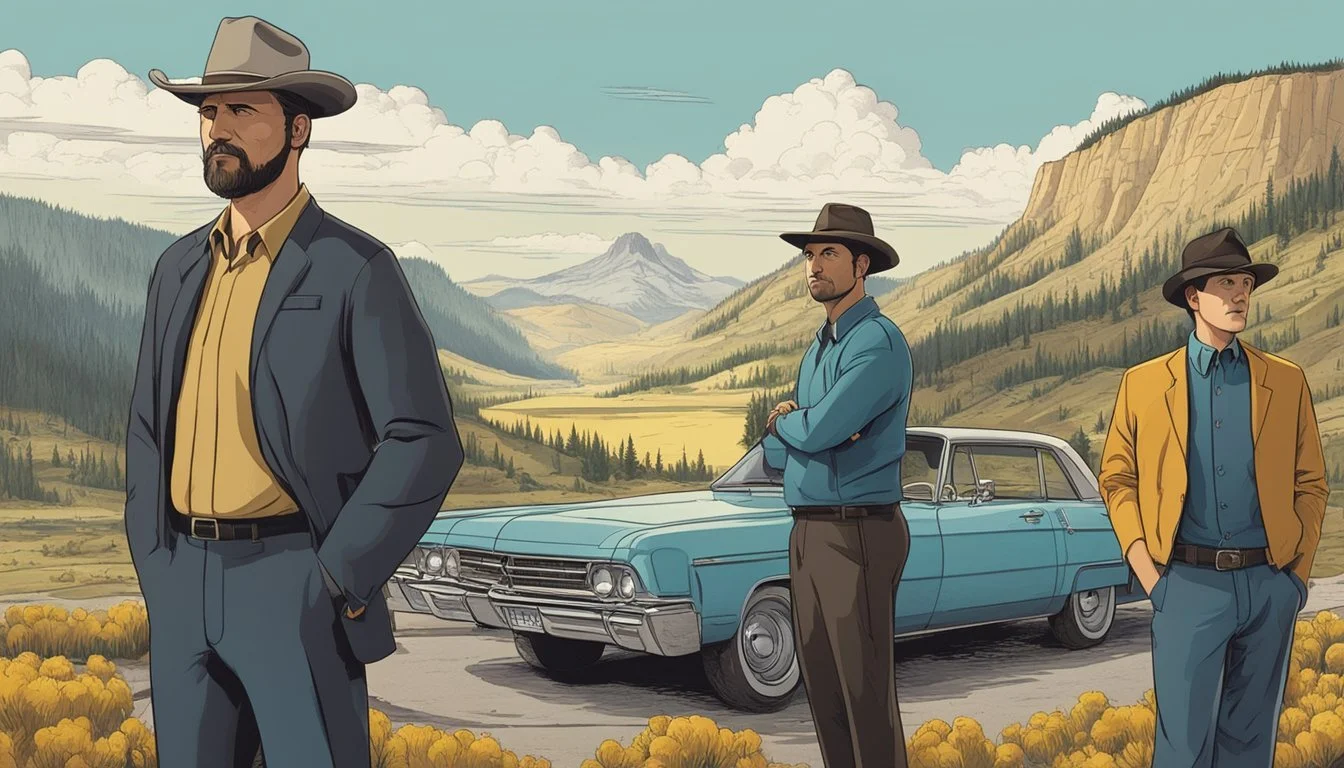7 Ways Yellowstone Has Changed the TV Landscape
Redefining Modern Western Drama
Yellowstone has taken the television world by storm since its debut in 2018. This modern Western drama series has captivated audiences with its stunning visuals, complex characters, and gripping storylines set against the backdrop of Montana's rugged landscapes.
Yellowstone's impact extends far beyond its viewership numbers, reshaping expectations for TV Westerns and influencing the broader television landscape. From its cinematic production values to its exploration of contemporary themes, the show has set new standards for the genre and television drama as a whole. This article examines seven key ways Yellowstone has changed the TV landscape, highlighting its innovations and lasting influence on the medium.
1) Influence on Western Genre Revivals
Yellowstone has breathed new life into the Western genre for television audiences. The show's popularity has sparked a renewed interest in stories set in the American West, leading to a wave of new Western-themed series.
This revival has encouraged networks and streaming platforms to greenlight more Western projects. Yellowstone's success has demonstrated that modern audiences still crave tales of frontier life and rugged individualism.
The show has updated classic Western themes for contemporary viewers. It explores complex issues like land rights, family dynamics, and political power struggles in a modern setting.
Yellowstone's influence extends beyond television. It has reignited interest in Western literature, fashion, and tourism to ranch destinations.
Other shows have emerged in Yellowstone's wake, attempting to capture similar themes and aesthetics. This trend has created a new subgenre of "neo-Westerns" that blend traditional Western elements with current storytelling techniques.
The series has proven that Westerns can attract diverse audiences when crafted with high production values and compelling narratives. This success has encouraged investment in Western-themed content across various media platforms.
2) Boost in Location-Based Filming
Yellowstone has sparked a renewed interest in location-based filming for television productions. The show's stunning visuals of Montana and Utah landscapes have become a central aspect of its appeal.
This approach has set a new standard for authenticity in TV scenery. Instead of relying on studio sets or green screens, Yellowstone showcases real ranches and natural environments.
The series' success has encouraged other productions to follow suit, seeking out picturesque locations for their shoots. This trend has led to increased economic activity in rural areas where filming takes place.
Local communities benefit from job opportunities and increased tourism as fans visit filming locations. The show's impact extends beyond its immediate production, creating a ripple effect in the regions it features.
Yellowstone's location-based filming has also raised the bar for visual quality in television. The show's cinematography captures sweeping vistas and rugged terrain with cinematic precision.
This emphasis on real locations enhances the storytelling, providing an immersive experience for viewers. It allows the landscape to become a character in its own right, integral to the show's narrative and atmosphere.
3) Impact on Character-Driven Storytelling
Yellowstone has elevated character-driven storytelling in television westerns. The show focuses on complex, multi-dimensional characters with deep backstories and motivations.
John Dutton, played by Kevin Costner, anchors the series with his nuanced portrayal of a rancher fighting to preserve his family's legacy. His children Beth, Jamie, and Kayce each grapple with their own internal conflicts and ambitions.
Supporting characters like Rip Wheeler and Monica Long add depth to the narrative. Their relationships and personal struggles intertwine with the main plot, creating a rich tapestry of human drama.
The series explores themes of family loyalty, power dynamics, and cultural identity through its characters' experiences. This approach allows viewers to connect emotionally with the story and its inhabitants.
Yellowstone's success has inspired other TV westerns to prioritize character development and intricate personal narratives. The show demonstrates that modern audiences crave depth and complexity in their on-screen protagonists and antagonists.
4) Rise of Modern Western Fashion Trends
Yellowstone has sparked a resurgence in Western-inspired fashion, blending traditional ranch wear with contemporary style. The show's wardrobe choices have influenced viewers and designers alike, leading to a trend dubbed "Westerncore."
John Dutton's iconic outfits, featuring rugged denim, leather jackets, and cowboy hats, have become particularly popular. These looks combine practicality with a timeless aesthetic that resonates with audiences beyond the ranch.
The series has also showcased sophisticated Western evening wear, demonstrating the versatility of the style. This has encouraged fashion retailers to expand their Western-inspired collections, catering to the growing demand for Yellowstone-esque clothing.
From distressed jeans to embroidered shirts, elements of the show's fashion have found their way into mainstream wardrobes. Even urban dwellers are embracing the cowboy-inspired look, incorporating Western accessories into their everyday outfits.
Yellowstone's influence extends beyond casual wear, impacting high-end fashion as well. Designers have incorporated Western motifs and materials into their collections, further cementing the trend's place in the fashion world.
5) Enhancement of Cinematic Television
Yellowstone has elevated the visual quality of television dramas to new heights. The show's cinematography captures the breathtaking landscapes of Montana and Utah with stunning precision.
Wide, sweeping shots of vast prairies and rugged mountains create a sense of grandeur that immerses viewers in the American West. These visuals rival those found in big-budget films, setting a new standard for television production.
The series employs cinematic techniques typically reserved for feature films, such as long takes and intricate camera movements. This approach enhances the storytelling and draws audiences deeper into the world of the Dutton ranch.
Yellowstone's attention to visual detail extends beyond landscapes to include carefully crafted set designs and authentic costumes. This commitment to authenticity helps create a fully realized world that feels both historical and contemporary.
The show's use of natural lighting and on-location shooting further blurs the line between television and cinema. This approach has inspired other TV productions to raise their visual standards and embrace more cinematic aesthetics.
6) Introduction of Complex Antiheroes
Yellowstone has brought complex antiheroes to the forefront of Western television dramas. The show's characters, particularly the Dutton family, blur the lines between right and wrong, presenting morally ambiguous figures that captivate audiences.
John Dutton, the family patriarch, embodies this antihero archetype. He fiercely protects his land and legacy, often employing questionable tactics that challenge viewers' ethical boundaries.
Beth Dutton, John's daughter, further exemplifies this complexity. Her ruthless business acumen and sharp tongue are balanced by moments of vulnerability and deep-seated family loyalty.
Rip Wheeler, the ranch foreman, adds another layer to the antihero roster. His unwavering devotion to the Duttons is often expressed through violent means, yet he remains a sympathetic character.
These multifaceted personalities defy traditional hero-villain dichotomies, inviting viewers to question their own moral standings. Yellowstone's antiheroes resonate with audiences, driving the show's popularity and influencing the broader television landscape.
7) Expansion of Multi-Platform Broadcast Deals
Yellowstone's success has led to groundbreaking multi-platform broadcast deals. The show's popularity on cable has opened doors for its distribution on network television.
CBS recently acquired the rights to air Yellowstone, introducing the series to a broader audience. This move marks a significant shift in how premium content is shared across different television platforms.
The show's transition to network TV requires some adjustments to meet broadcast standards. These changes include reduced profanity and toned-down violent content.
This multi-platform approach allows Yellowstone to reach viewers who may not have access to cable or streaming services. It also demonstrates the evolving landscape of television distribution.
The success of this strategy could pave the way for similar deals in the future. Other popular cable shows might follow suit, expanding their reach through network television partnerships.
This trend reflects the television industry's adaptation to changing viewer habits. It blurs the lines between traditional cable, network TV, and streaming platforms.
The Influence of Yellowstone's Storytelling
Yellowstone's narrative approach has reshaped expectations for television dramas. The show's intricate plotlines and nuanced character portrayals have set new standards in the industry.
Impact on Narrative Depth
Yellowstone weaves complex storylines that span multiple seasons. The show tackles themes of family legacy, land rights, and power dynamics with sophistication. Each episode builds on previous events, creating a rich tapestry of interconnected plots.
The series doesn't shy away from moral ambiguity. Characters often face difficult choices with far-reaching consequences. This approach adds depth and realism to the storytelling.
Yellowstone's pacing alternates between intense action and slower, character-driven moments. This balance keeps viewers engaged while allowing for deeper exploration of the show's themes.
Character Development Innovations
Yellowstone breaks new ground in character development. The show presents fully realized characters with complex motivations and backstories.
Main characters evolve significantly over time. Their growth feels organic, driven by experiences and relationships within the show's world. Supporting characters receive similar attention, with many having their own compelling arcs.
The series excels at revealing character through action rather than exposition. Subtle gestures and decisions often speak louder than words. This approach creates a more immersive and believable narrative.
Yellowstone's ensemble cast allows for diverse perspectives on key events. This multi-faceted approach enriches the storytelling and provides viewers with a more comprehensive understanding of the show's world.
Cultural Phenomenon and Its Effects
Yellowstone has achieved cultural phenomenon status, profoundly impacting television and society. The show's popularity has redefined the Western genre and broadened its audience appeal.
Redefining Western Genre
Yellowstone breathed new life into the Western genre. Its modern take on classic themes resonated with viewers, blending traditional Western elements with contemporary issues. The show's exploration of land ownership, family dynamics, and power struggles in America struck a chord.
Yellowstone's cinematic quality elevated expectations for TV production. Its stunning visuals of Montana landscapes became a hallmark, inspiring other shows to prioritize on-location filming.
The series sparked conversations about the changing face of the American West. It delved into complex topics like Native American rights and environmental conservation, adding depth to the genre.
Influence on Audience Demographics
Yellowstone's appeal transcended typical Western audience demographics. The show attracted viewers across age groups and geographic regions, bridging urban and rural divides.
Its word-of-mouth success challenged traditional TV marketing strategies. Yellowstone's popularity grew organically, demonstrating the power of compelling storytelling.
The series increased tourism to Montana as fans sought to experience the show's settings firsthand. This influx had economic impacts on local communities featured in the show.
Yellowstone's success led to a surge in Western-themed content across various platforms. It paved the way for spin-offs and similar series, expanding the genre's presence in mainstream media.









